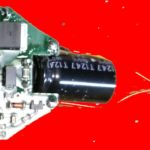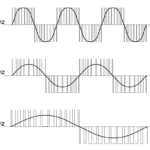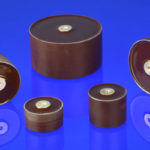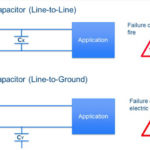Hosted by Jeff Shepard, EE World has organized this “virtual roundtable” into “Power Converter Output Filter Capacitors” with Eduardo Drehmer (ED), Director of Marketing Film Capacitors & Power Quality Solutions with TDK Electronics, Norton Brissac (NB), Sr. Marketing Manager for Aluminum Electrolytic Capacitors with TDK Electronics and Daniel West (DW) Field Application Engineer with AVX Corp.
JS: Which capacitor technology is best suited for output filtering in inverter designs? What key specifications are key for capacitors in inverter output filters?

ED: If an inverter output is not connected to the grid, customers can explore components designed to withstand the application load, but there is no need for agency approvals (UL/IEC/CSA/CQC), which can result in a smaller size and lower-cost components.
DW: Ceramics are ideal, and safety certifications are the key specification to look out for.
JS: What are the most important, or under-appreciated, capacitor specifications for AC-DC power supply or DC-DC converter output filtering?
DW: Low ESR-for increased current handling and lower ripple voltage, Low ESL-for higher frequency performance, temperature, and aging stability- for improved performance over application life, and High Reliability.
ED: With modern converters increasing switching frequency, the ripple current capability of the safety caps is something that needs to be considered. This is often overlooked and might result in a significant loss of the expected lifetime of the components.
JS: How can designers select between aluminum versus tantalum electrolytic capacitors in the output filter of AC-DC power supplies or DC-DC converters?

NB: There are three important factors for designers to consider the output filtering of DC-DC converter with regard to capacitors:
- Rated voltage
- Rated ripple current
- ESR (equivalent series resistance)
Of course, the voltage and ripple current applied to a capacitor must be below the maximum ratings for the capacitor. The ESR is an important parameter that determines the output ripple voltage.
Tantalum cap has lower ESR than standard aluminum capacitors, however, they also have limited capacitance. In order to enhance ESR characteristics, TDK launched a hybrid polymer capacitor with much lower ESR at a high frequency that fit the requirement of the output filter circuit. Aluminum

capacitors are designed to operate up to 600V, and Ta capacitors have a max Vr of 120V.
Additionally, the selection of the right product is very much dependent on the application condition. The same considerations apply for AC-DC converters, as the output circuit is located on the DC side (after rectification).
DW: Tantalums are very energy-dense and ideal for size constrained designs, and come in an array of small packages, and have an indefinite lifetime characteristic. Introducing a polymer cathode to tantalums provides lower ESR and increased voltage range, but aluminum capacitors can achieve higher voltage ranges and are ideal for very large magnitude power applications.
JS: When is it best to use ceramic capacitors or film capacitors in the output filter of AC-DC power supplies or DC-DC converters?
DW: It is known that MLCCs are widely used, and available in very small form factors that achieve very high capacitance and voltage ratings, becoming more reliable as ceramic technology advances. However, for applications where safety is paramount, it is strongly recommended to consider film capacitors for their self-healing, open circuit behavior under fault conditions.
ED: Ceramics offer higher operation temperatures and normally smaller size (higher capacitance density), while film capacitors offer higher stability (lower drift on capacitance and lifetime due to environmental conditions) and usually feature lower costs.
JS: Thanks to our panelists for sharing their insights and experience! You might also be interested in reading “X and Y Safety Capacitor Applications” Virtual Roundtable (part 1 of 2).






